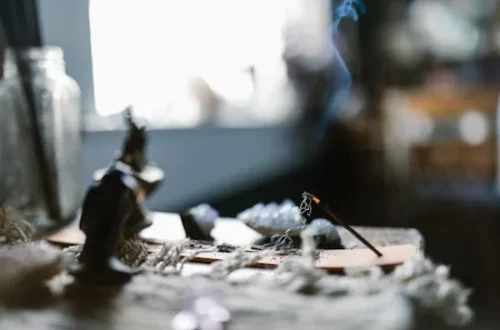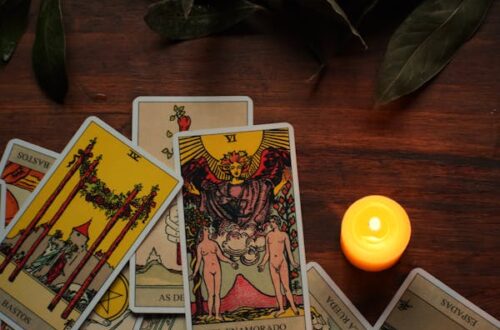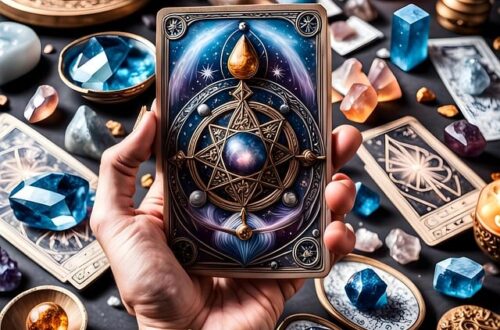
Tarot for creativity: Overcoming blocks and finding inspiration
Table of Contents
Introduction
In the journey of creative expression, many artists, writers, and thinkers encounter various blocks that hinder their ability to produce work. These blocks can stem from self-doubt, fear of failure, or even external pressures. The Tarot has emerged as a powerful tool that can help individuals navigate these creative obstacles. By tapping into the symbolic and intuitive aspects of the Tarot, one can unlock new pathways to creativity and inspiration.
Understanding Tarot
The History of Tarot
The Tarot has a rich history that dates back to the 15th century. Initially, it was used as a card game in Europe. Over time, it evolved into a tool for divination and introspection. The Tarot deck typically consists of 78 cards, divided into the Major and Minor Arcana. Each card is imbued with its own meaning, symbolism, and imagery, making it a profound resource for personal reflection and creative exploration.
The Structure of the Tarot Deck
The Tarot deck is composed of two main sections: the Major Arcana and the Minor Arcana. The Major Arcana contains 22 cards, each representing significant life events, archetypes, and spiritual lessons. These cards include well-known figures such as The Fool, The Magician, and The Empress. On the other hand, the Minor Arcana consists of 56 cards divided into four suits: Cups, Pentacles, Swords, and Wands. Each suit corresponds to different aspects of life, such as emotions, material concerns, thoughts, and creativity.
Creativity and Its Challenges
Identifying Creative Blocks
Creative blocks can manifest in various forms, including writer’s block, lack of inspiration, or feelings of inadequacy. Identifying the source of these blocks is crucial for overcoming them. Some common causes include:
- Self-doubt: Many creatives struggle with feelings of inadequacy, leading to paralysis in their creative process. For instance, a painter may hesitate to start a new piece due to fear that it won’t meet their standards.
- Fear of criticism: The fear of negative feedback can stifle creativity and inhibit self-expression. A musician may refrain from sharing their compositions because they worry about how others will react.
- External pressures: Deadlines and societal expectations can create a sense of urgency that undermines the creative spirit. Writers, for example, may feel pressured to produce commercially viable work rather than exploring their genuine artistic vision.
The Importance of Overcoming Blocks
Overcoming creative blocks is essential for personal growth and artistic development. When individuals break through these barriers, they often discover new perspectives, enhance their skills, and foster a deeper connection to their creative selves. Furthermore, embracing the creative process can lead to greater fulfillment and self-awareness. The story of renowned author Elizabeth Gilbert exemplifies this point. In her book, Big Magic: Creative Living Beyond Fear, she discusses how embracing fear and uncertainty can lead to unexpected creative breakthroughs.
Using Tarot to Inspire Creativity
The Tarot as a Tool for Reflection
Tarot serves as a mirror, reflecting our inner thoughts and feelings. By engaging with the cards, individuals can gain insights into their creative struggles. For example, drawing a card each day can help to focus attention on specific challenges or inspirations. This practice encourages introspection and opens the mind to new possibilities.
Daily Tarot Pulls
A simple yet effective way to use Tarot for creativity is through daily pulls. By selecting one card each morning, individuals can set an intention for their creative practice. For instance, if the card drawn is The Empress, it may symbolize abundance and nurturing energy, encouraging the individual to explore themes of growth in their work. In contrast, drawing The Tower might prompt the artist to confront their fears and embrace chaos in their creative process, ultimately leading to transformative work.
Journaling with Tarot
Combining Tarot with journaling can amplify its effectiveness. After pulling a card, take time to write down thoughts and feelings related to the card’s meaning. This process fosters a deeper understanding of personal obstacles and potential avenues for creative expression. For example, an author might draw the Ace of Wands, symbolizing inspiration and new beginnings. Journaling about this card could lead to a flood of ideas for a new story, exploring themes of passion and creativity.
Card Spreads for Creative Inspiration
Specific Tarot spreads can be designed to address creative blocks and inspire new ideas. One such spread is the Creativity Spread, which consists of three cards:
- Card 1: What is currently blocking my creativity?
- Card 2: What resources do I have to overcome this block?
- Card 3: What new inspiration can I explore?
This spread allows individuals to gain clarity on their creative process and identify actionable steps forward. For example, drawing The Moon as the first card might reveal subconscious fears, while drawing The Magician as the second card suggests that they possess the skills needed to overcome those fears.
Case Studies: Tarot and Creativity
Artists Who Use Tarot
Many artists have turned to Tarot as a source of inspiration and guidance. For example, renowned artist Marina Abramović has incorporated Tarot into her creative process. By using Tarot to explore her subconscious, she has been able to produce provocative works that challenge societal norms. In her performance art, she often engages with themes of vulnerability and connection, similar to the emotional exploration found in Tarot readings.
Writers and Tarot
Writers, too, have found value in using Tarot. Author Jude J. McKenzie utilizes Tarot cards to help develop her characters and plotlines. By drawing cards that resonate with her story, she gains insights that shape her narratives. This method not only enhances her creativity but also adds depth to her writing. For example, drawing The Lovers card may inspire her to explore complex relationships between characters, while The Hermit might lead to themes of solitude and self-discovery.
Musicians and Tarot
Musicians like Fiona Apple have also found inspiration in Tarot. Apple is known for her deeply personal lyrics, often exploring themes of vulnerability and emotional complexity. By drawing on Tarot imagery, she infuses her music with rich symbolism that resonates with her audience. For instance, the card The High Priestess might inspire a song about intuition and inner wisdom, allowing her to connect with listeners on a profound level.
Tips for Using Tarot to Enhance Creativity
Establish a Ritual
Creating a ritual around Tarot practice can enhance its effectiveness. Designate a specific time and space for engaging with the cards. This ritual can help to signal the mind that it is time to focus on creativity and inspiration. For instance, an artist might light a candle and create a calming environment before drawing cards, which can enhance their connection to the intuitive aspects of the Tarot.
Trust Your Intuition
When working with Tarot, it is essential to trust your intuition. The cards may evoke feelings and thoughts that are unique to each individual. Rather than relying solely on traditional interpretations, allow personal insights to guide the creative process. A writer might draw The Star card, traditionally associated with hope and inspiration, but intuitively interpret it as a call to explore themes of healing and renewal in their writing.
Collaborate with Others
Engaging in group Tarot readings can foster creativity and inspire new ideas. Collaborating with fellow artists or writers allows for diverse perspectives and collective exploration. Sharing insights and interpretations can lead to breakthroughs and innovative concepts. For example, a group of creatives might gather to discuss their individual interpretations of a single card, resulting in a rich tapestry of ideas that can be woven into their respective works.
Practice Mindfulness and Presence
Incorporating mindfulness into Tarot practice can enhance creativity. When drawing cards, take a moment to breathe and ground yourself in the present. This mindfulness allows for deeper connections to the cards and facilitates a more authentic creative process. An artist who practices mindfulness while engaging with Tarot may find that their artwork flows more freely and intuitively, leading to unexpected and exciting results.
Real-Life Examples of Tarot Boosting Creativity
Transforming Writer’s Block
Many writers experience periods of stagnation. Author Neil Gaiman has spoken about how Tarot helped him overcome writer’s block. He often uses the cards to explore characters and plot ideas. When faced with a creative impasse, he pulls cards to gain new perspectives on his writing. This practice helps him reconnect with his creativity and breathe life into his narratives.
Visual Artists and Tarot
Visual artists like Megan Massacre, a renowned tattoo artist, have also turned to Tarot for inspiration. She incorporates Tarot themes into her artwork, drawing on the rich symbolism of the cards to inform her designs. By using Tarot as a reference, she not only enhances her artistic practice but also connects her audience to deeper meanings within her work. Her tattoo designs often reflect the emotional depth and complexity found in Tarot, making her art resonate with clients on a personal level.
Finding New Directions in Music
Musicians such as St. Vincent have openly shared how Tarot influences their creative process. St. Vincent has used Tarot cards as a means of exploring identity and emotion in her music. For example, the card The Fool might inspire a song about taking risks and embracing change, while The Chariot could lead to themes of determination and overcoming obstacles. This integration of Tarot helps her create music that is both personal and universal, resonating with a wide audience.
Conclusion
Tarot offers a unique pathway for overcoming creative blocks and finding inspiration. By incorporating Tarot into the creative process, individuals can tap into their intuition, explore their subconscious, and unlock new avenues for expression. Embracing the symbolism and insights of Tarot can transform challenges into opportunities for growth, ultimately enriching one’s artistic journey. As seen through the experiences of various artists and creatives, Tarot not only serves as a tool for reflection but also as a catalyst for profound creative breakthroughs.
Bibliography
- Pollack, Rachel. 78 Degrees of Wisdom: A Tarot Journey to Self-Awareness. Weiser Books, 1980. ISBN: 978-0877284258.
- Camoin, Philippe. Tarot: The Origins, History, and Symbols. 1st Books Library, 2003. ISBN: 978-1410761191.
- Greer, Mary K. The Tarot: History, Symbolism, and Divination. Destiny Books, 1987. ISBN: 978-0892812350.
- Mankey, Lon. Tarot for the Healing Heart: Using Inner Wisdom for Personal Growth and Emotional Healing. Llewellyn Publications, 2005. ISBN: 978-0738703300.
- McElroy, James. The Creative Tarot: A Modern Guide to an Inspired Life. Ten Speed Press, 2016. ISBN: 978-1607749212.
- Gilbert, Elizabeth. Big Magic: Creative Living Beyond Fear. Riverhead Books, 2015. ISBN: 978-1594634727.
- Gaiman, Neil. The View from the Cheap Seats: Selected Nonfiction. William Morrow, 2016. ISBN: 978-0062262002.
- Massacre, Megan. Body of Art: Tattooing and the Quest for Self-Expression. St. Martin’s Press, 2018. ISBN: 978-1250180189.
- Clark, Annie. The Tarot Coloring Book. North Atlantic Books, 2017. ISBN: 978-1623171789.




